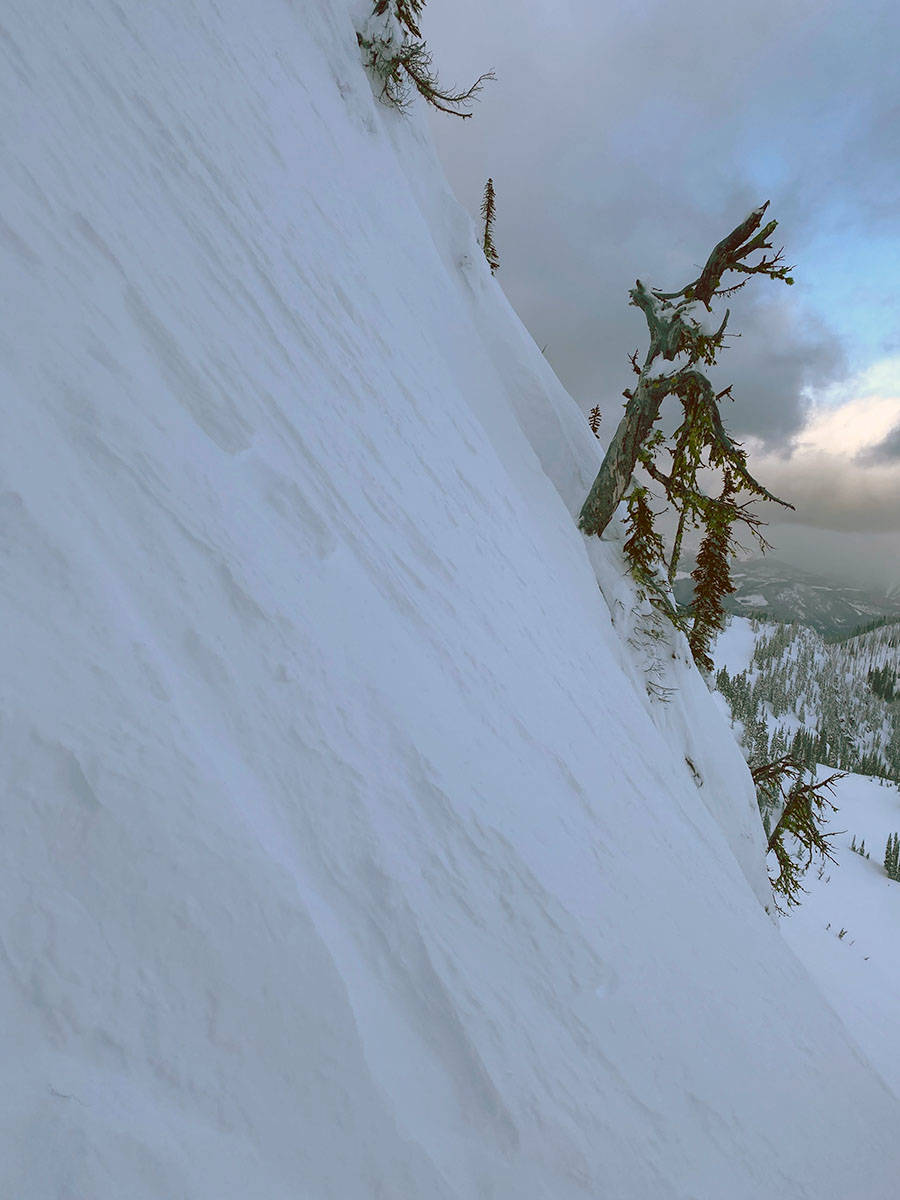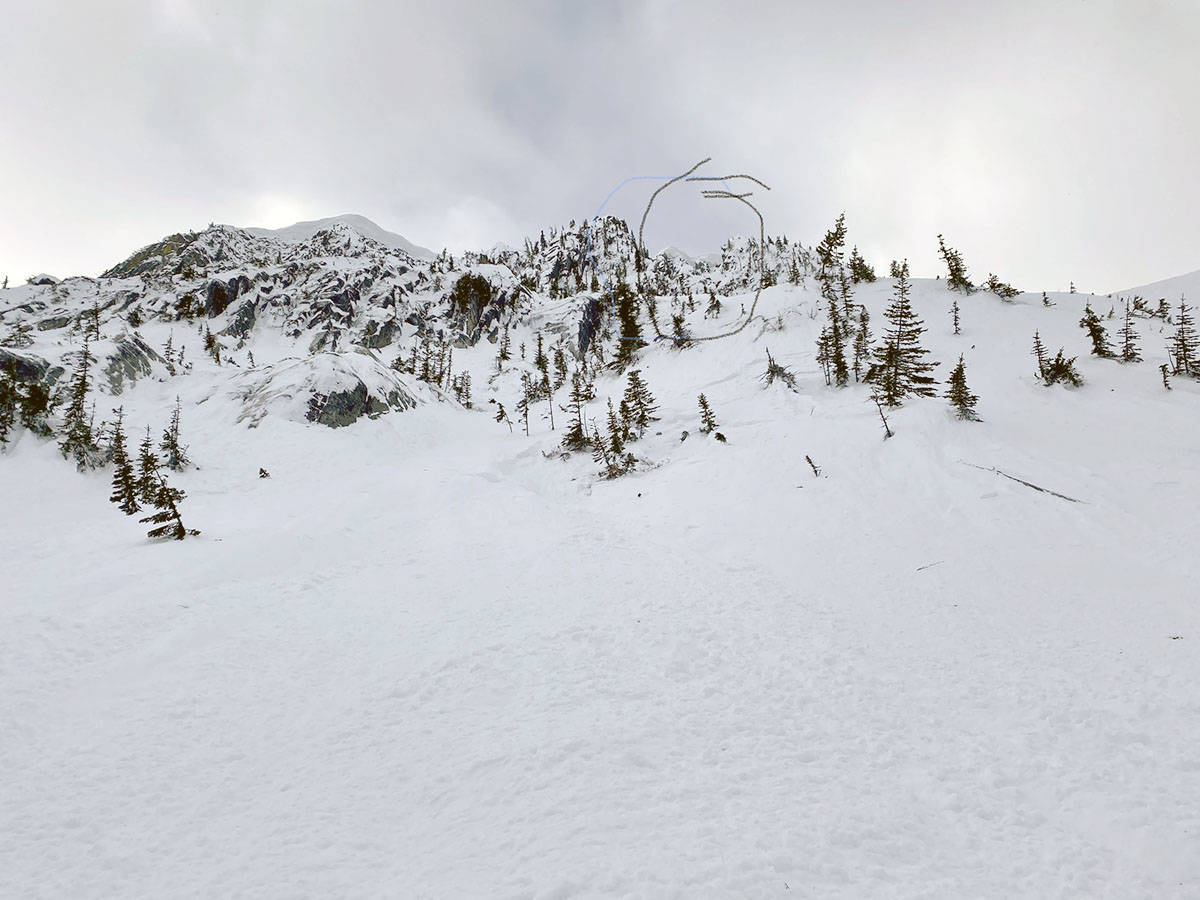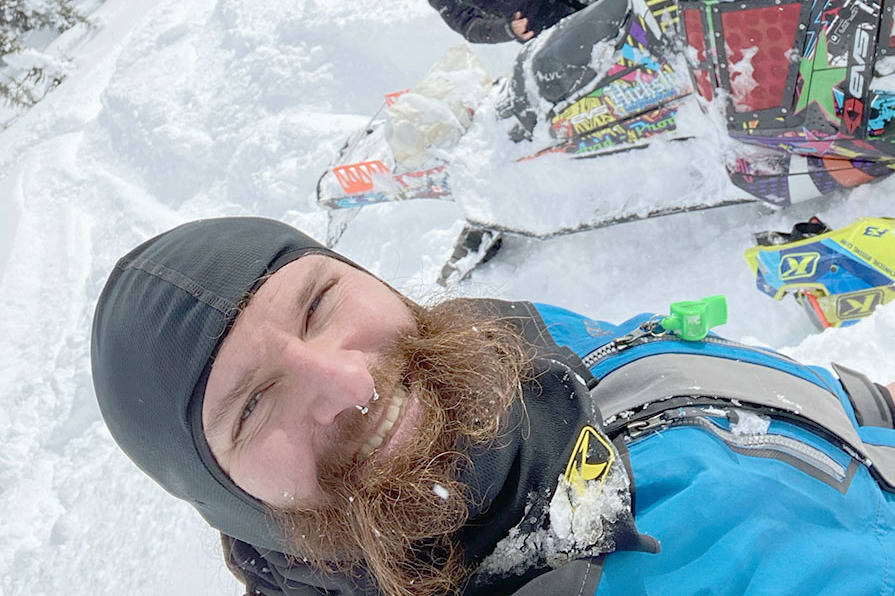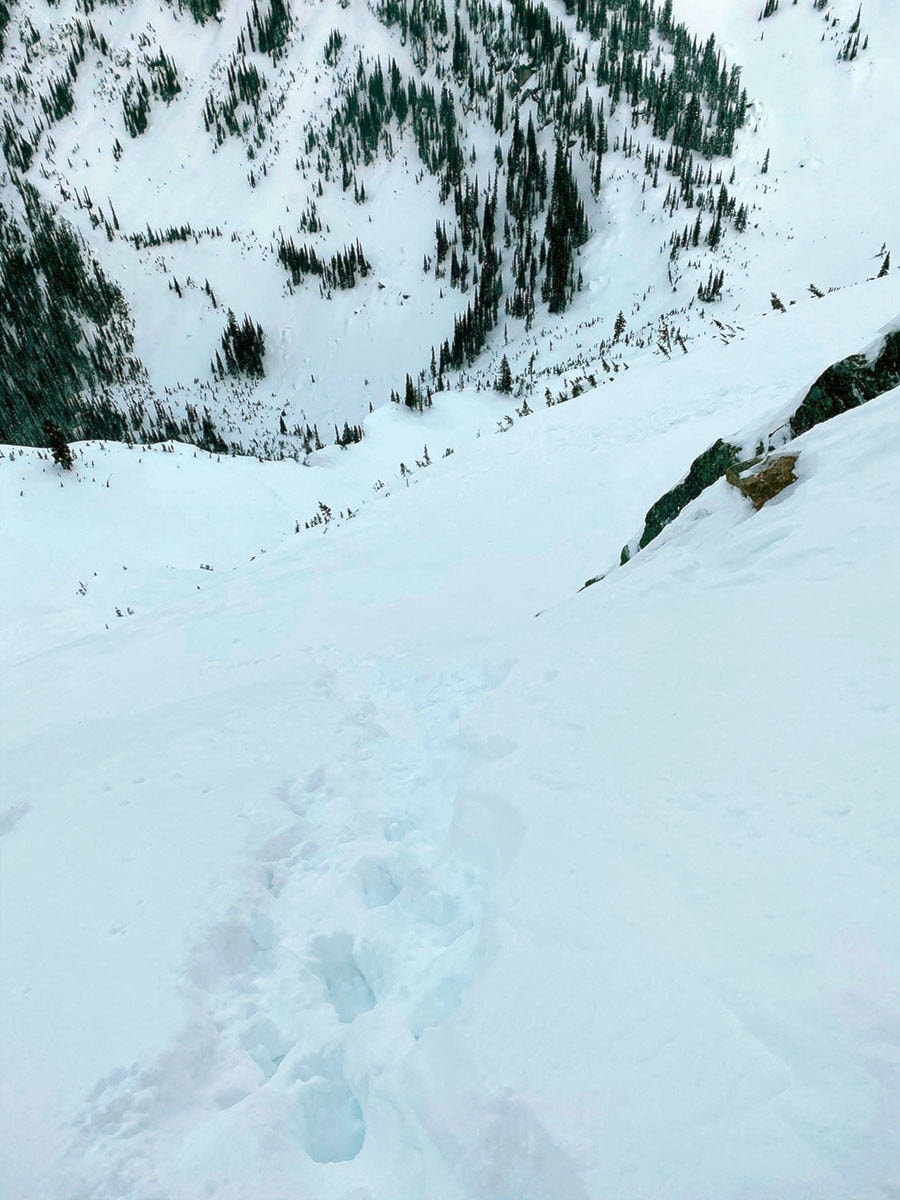“It’s not every day you fall off a mountain and live to tell the tale,” says Blaine Penner of the experience that left him looking death in the face on a West Kootenay mountain.
Penner headed out with friends on the morning of Feb. 5 for a day of snowmobiling in the Norns Range north of Castlegar. They drove up Lady Bird Road out of Pass Creek and spent several hours having fun on their sleds.
The experienced group had checked avalanche conditions before heading out and finding them to be “considerable” decided to stick to what they considered “safe zones”.
Shortly after 2:00 p.m. Penner and his friend paused for a break and Penner got off his sled and walked out to the edge of what he thought was a ridge. Turns out he was confused about the location and discovered he was actually standing on a cornice of snow.
Penner saw a crack and felt the ground beneath him shift as the cornice broke off.
“I knew it was already too late,” said Penner, so he instantly reached for the cord on his avalanche airbag.
By the time he hit the ground about 50 feet below, the airbag had fully deployed. From that point, Penner continued to ride the top of an avalanche down the mountain.
“It starts to pull me under into it and I know I’m getting buried under the snow, but I can feel my airbag popping me up,” said Penner.
“I was doing everything I could to keep my head upright.”
Eventually, Penner says he just accepted the fact that he was going to die.
“I had to fully surrender to accepting that I could go over a 1000-foot cliff and die at any moment. I had to make peace with it.”
But Penner decided that even though he was accepting the inevitable, he was going to fight it with all his might for as long as he could. He says his brain began to process what was going on and soon his thoughts became more of a litany of scenarios — I hope I don’t land on a rock, I hope I don’t land on my head, I hope I don’t break my neck.
As he tumbled downwards, he kept fighting to keep his head up, always looking for a bit of light.
When Penner finally came to a stop, there was a moment where he thought he must have died since he had just surrendered that there was no other way the journey would end.
But then, his friend’s voice came screaming out of the radio, calling his name.
He laid back and let his mind go for just a minute.
“You are in total disbelief after going through something like that,” he said.
Penner got up, gave himself an assessment and determined that the only thing wrong with him was a charlie horse.
“I got on the radio to Nate, told him not only was I alive, but that I was completely uninjured,” said Penner.
At that point he had travelled almost 3000 feet down the mountain.
Penner told his friend to bunker down — he was going to start hiking back up.
Meanwhile, a sledder from a different group had already called it a day and returned to his home around Slocan Park. But he had forgotten to turn off his radio. He overheard the commotion and conversation between Penner and his friend and offered assistance. The man named Jesse called Penner’s friends and family and Castlegar Search and Rescue was notified of the situation.
“I knew I was in danger of a second avalanche,” said Penner.
“The smartest thing to do probably would have been to sit and wait for the helicopter — but I’m not that person. I challenged myself to hike myself out of the situation that I put myself in.”
The climb to the top took him four hours and he could just see the orange glow of the sunset when he got there.
Penner says there’s some lessons to be learned from the experience and wants to share them with others.
“I made one complacent choice — if I had made two, it would have cost me my life,” says Penner.
“I kept my helmet on, I had my backpack on, I had my trigger out for my airbag, I had a charged radio.”
Penner’s message to others: buy the gear, wear your gear and know how to use it.
“Without it, I wouldn’t be here.”






